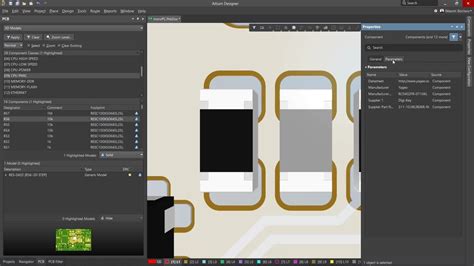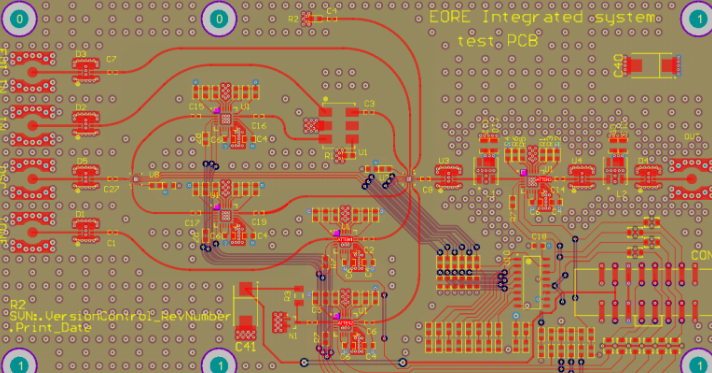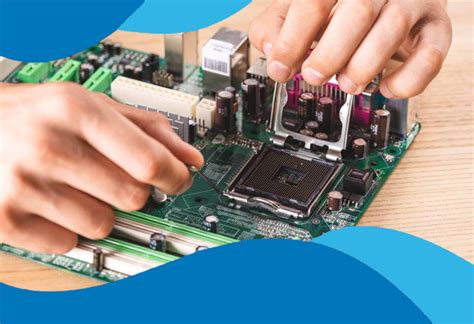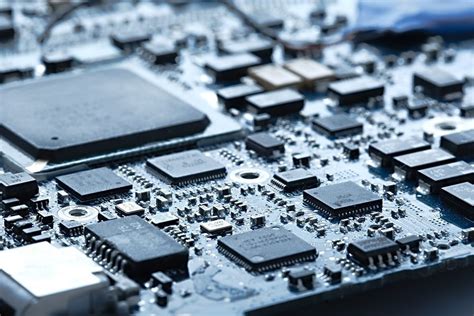Mastering Altium Multiboard Assembly for Seamless Design Integration
Key Takeaways
Mastering Altium Multiboard Assembly is crucial for engineers and designers involved in complex PCB assembly projects. It enables them to efficiently manage multiple interconnected boards, ensuring that designs integrate seamlessly. By understanding the key features and benefits of multiboard design, professionals can enhance their productivity significantly. Implementing effective techniques for seamless design integration not only streamlines the process but also fosters better collaboration among team members. As teams work together on PCBA, addressing challenges early on becomes essential to avoid complications later in the assembly phase. Familiarity with best practices in the workflow of multiboard assembly can lead to fewer errors and quicker turnaround times, making projects more successful overall. Finally, keeping an eye on future trends in multiboard assembly techniques is vital for staying ahead in this fast-evolving field, ensuring that one’s skills remain relevant and cutting-edge in a competitive market.
Introduction to Altium Multiboard Assembly
In the realm of PCB assembly, Altium Multiboard Assembly has emerged as a powerful solution for designers facing the increasing complexity of modern circuit board projects. This innovative software allows for the effective management of multiple interconnected PCBAs, enabling designers to streamline their workflow and ensure that various board designs function in harmony. The incorporation of multiboard assembly techniques not only facilitates a more organized approach but also enhances overall design integrity.
With traditional methods, managing separate boards could lead to disjointed designs and communication breakdowns during the manufacturing process. By leveraging Altium‘s multiboard capabilities, teams can experience a significant shift in their design approach, aligning all relevant components and interconnections within a unified environment. This approach promotes efficiency in collaborative efforts, helping engineers and designers to visualize interconnections clearly, thereby reducing potential errors.
Additionally, Altium offers robust tools for verifying and validating the integrity of these interconnected designs before they move to production. By incorporating automated checks and balances within the assembly process, teams can optimize their workflow and ultimately enhance product reliability. Below is a table summarizing some key advantages of utilizing Altium Multiboard Assembly:
| Feature | Benefit |
|---|---|
| Unified Environment | Streamlined design management |
| Automated Checking | Reduced errors in assembly |
| Enhanced Visualization | Improved team collaboration |
| Integrated Design Tools | Efficient workflow for PCBAs |
In conclusion, adopting Altium Multiboard Assembly not only simplifies the intricate process of managing multiple boards but also fosters an environment that prioritizes collaboration and productivity. As designers continue to navigate complex projects, mastering this innovative tool will undoubtedly pave the way for future successes in PCB development.
Key Features and Benefits of Multiboard Design
Multiboard design is a powerful strategy that significantly enhances PCB assembly processes. By allowing multiple interconnected printed circuit boards (PCBs) to function seamlessly together, it provides numerous advantages, including improved design efficiency and reduced manufacturing costs. One of the key features of multiboard design is its capacity to facilitate complex layouts where individual PCBA components can be expertly integrated into a larger system architecture. This integration not only simplifies the overall design but also enhances performance through optimized signal integrity and reduced electromagnetic interference. Additionally, multiboard assemblies enable teams to tackle intricate projects with greater collaboration, as different teams can work on various boards concurrently while ensuring that every component aligns with the final product’s specifications. The flexibility offered by multiboard design also extends to manufacturing processes, yielding a shorter time-to-market and increased production scalability. Ultimately, embracing multiboard assembly fosters an innovative environment where designs can evolve quickly and effectively respond to changing market demands.
Techniques for Seamless Design Integration
Achieving seamless design integration in Altium Multiboard Assembly requires careful planning and the implementation of several key techniques. Firstly, ensure that your PCB assembly is well-structured by maintaining a consistent schematic structure across all boards. Using a unified naming convention for components will enhance the traceability and readability of the design, crucial for collaborative efforts among team members. Additionally, utilizing the PCBA design rule checks can help identify potential integration issues early in the process, allowing for prompt resolution.
Another effective technique involves leveraging hierarchical design, which enables you to break down complex systems into manageable sections. This not only simplifies the multiboard environment but also makes it easier to update or modify parts of the design as needed. When integrating various components, consider using shared common nets across boards. This practice promotes efficiency and reduces errors by allowing signals to pass seamlessly between different layers of your project.
“The key to successful integration lies in communication among team members and utilizing tools that encourage collaboration.”
Incorporating version control systems can also significantly enhance your workflow by ensuring that all stakeholders are aligned with the latest changes in designs, further promoting a cohesive environment for pcb assembly projects. Furthermore, investing time into regular feedback loops within your team can help clarify any misunderstandings about responsibilities or specifications—creating a shared vision that ultimately leads to a smoother assembly process and increased productivity.
In summary, implementing these techniques can significantly elevate your proficiency in Altium Multiboard Assembly, setting a strong foundation for future collaborative projects while minimizing integration challenges typically encountered during complex PCBA tasks.
Enhancing Collaboration in PCB Projects
In the realm of PCB assembly, effective collaboration among team members is crucial for the success of any project, particularly those involving complex multiboard designs. Multiboard projects often require input from various specialists, including electrical engineers, mechanical designers, and quality assurance personnel. To facilitate seamless collaboration, it’s essential to leverage tools and methodologies that promote communication and streamline the PCBA process. Utilizing platforms that support real-time sharing and editing of designs can significantly boost productivity and reduce errors in the pcb assembly process. Furthermore, establishing clear workflows that dictate how information is exchanged can help ensure that all team members are aligned on project goals.
One effective strategy to enhance collaboration is to implement regular team meetings focused on updates and challenges encountered during development. This approach not only encourages accountability but fosters a culture of continuous improvement, where all voices are heard, leading to innovative solutions for common problems. Additionally, creating a centralized repository for documentation related to multiboard projects can vastly improve access to critical information for teams working remotely or across different locations.
Adopting a collaborative mindset within the team also promotes better understanding of each component’s role within the overall PCBA framework. By recognizing how individual contributions fit into the larger picture of multiboard design, team members are more likely to engage proactively in problem-solving and knowledge sharing. Ultimately, enhancing collaboration not only elevates project outcomes but also cultivates a more cohesive working environment, leading to better results in future assemblies.
Best Practices for Multiboard Assembly Workflow
When embarking on a multiboard assembly project, adhering to established best practices can significantly enhance the efficiency and quality of the final product. First and foremost, it’s essential to ensure that all PCB assembly elements are meticulously documented. This includes maintaining detailed schematics and layout files which help streamline the communication among team members involved in the design process. Utilizing version control systems can also enhance collaboration, allowing multiple designers to work concurrently without conflicts.
Another pivotal aspect of a successful pcba (printed circuit board assembly) workflow is adopting standardized protocols for components selection. By choosing components that are compatible across various boards, it simplifies sourcing and improves resource utilization. Additionally, employing simulation tools during the design phase helps identify potential integration issues early on, thus saving time and reducing costs associated with redesigns.
Regular team meetings should enable open discussions on progress and hurdles faced during assembly. This practice not only fosters team cohesion but also encourages innovative solutions to common challenges encountered in multiboard design projects. Lastly, continuous training for all members involved ensures that they are up-to-date with the latest tools and techniques in pcb assembly, positioning the team for success in complex projects that demand precision and collaboration.
Troubleshooting Common Challenges in Multiboard Projects
In the realm of PCB assembly, tackling challenges during multiboard projects is pivotal for achieving desired outcomes. One common issue arises during the assembly phase, where different boards may have mismatched specifications, leading to connectivity problems. Ensuring that each PCB is designed with consistent parameters can significantly mitigate these discrepancies. Additionally, managing component placement and orientation requires vigilance; improper placements can result in functional failures. To address these challenges effectively, employing robust design rule checks within the Altium environment is crucial.
Another prominent challenge is the collaboration between teams working on PCBA tasks. To enhance communication and streamline efforts, implementing a version control system allows teams to keep track of changes made to board designs in real-time, ensuring everyone is aligned and reducing potential conflicts. Encouraging regular reviews can aid in identifying potential design flaws early, which ultimately leads to smoother workflows.
Moreover, integrating multiple boards necessitates rigorous testing protocols prior to final assembly. Applying iterative testing throughout the design and assembly process helps uncover issues before they escalate into significant setbacks. By adopting a proactive approach that emphasizes thorough documentation and methodical testing practices, engineers can navigate the complexities of multiboard projects more effectively, resulting in successful outcomes that meet rigorous standards for quality and reliability.
Case Studies: Successful Multiboard Designs
In exploring the intricacies of Altium Multiboard Assembly, several case studies highlight the effectiveness of seamless design integration in real-world applications. One notable example involves a consumer electronics company that faced challenges with PCB assembly across multiple interconnected boards. By utilizing the powerful features of Altium for multiboard design, the company was able to streamline its workflow, significantly reducing the time-to-market for their innovative products. Through improved collaboration among engineers and designers, they efficiently shared updates and modifications, ensuring that all stakeholders remained aligned throughout the project.
Another compelling case study showcases a medical device manufacturer that integrated a complex system consisting of several interconnected PCBA units. This company leveraged advanced techniques in multiboard assembly to enhance reliability and functionality, which are critical in the medical field. The use of multiboard design enabled them to achieve tighter tolerances and better signal integrity throughout their devices, ultimately leading to improved patient outcomes.
These examples demonstrate not only the versatility of Altium Multiboard Assembly but also underscore its transformative impact on productivity and collaboration within PCB projects. As more companies recognize the value of integrated design approaches, we can expect to see a growing trend towards utilizing these techniques to overcome challenges typical in complex electronic systems.
Future Trends in Multiboard Assembly Techniques
As the landscape of PCB assembly evolves, the future of multiboard assembly techniques is set to be shaped by several key trends. One prominent trend is the increasing integration of automation and artificial intelligence in the design and manufacturing processes of pcba. Automation can significantly reduce manual errors and enhance production efficiency, allowing teams to focus more on strategic design choices rather than repetitive tasks. Furthermore, the rise of smart technologies in multiboard assembly is facilitating real-time data sharing among team members, which enhances collaboration across different departments and improves the quality of output.
Another trend is the push for greater sustainability in PCB assembly processes. Manufacturers are beginning to adopt eco-friendly materials and recycling practices as part of their operational protocols. This shift not only aligns with global sustainability goals but also meets growing consumer demand for environmentally responsible products.
Moreover, advancements in 3D printing technology are expanding capabilities in rapid prototyping, allowing designers to create intricate multiboard layouts with unprecedented speed and precision. The ability to quickly iterate on designs using 3D printing can significantly shorten lead times for complex projects and enhance overall productivity.
In summary, these emerging trends—automation, sustainability, collaborative technologies, and 3D printing—are poised to redefine multiboard assembly techniques in the coming years, ensuring that organizations remain at the forefront of innovative pcba practices while meeting industry demands effectively.
Conclusion
In the realm of PCB assembly, the Altium Multiboard Assembly tool stands out as a pivotal resource for engineers and designers working on complex projects. By mastering the intricacies of this software, professionals can significantly enhance their productivity and streamline the overall workflow of PCBA processes. The ability to integrate multiple boards seamlessly not only simplifies the design but also fosters greater collaboration among team members. As the industry advances, staying updated with emerging techniques will ensure that designers can leverage multiboard assembly benefits effectively. Moving forward, embracing these methods will not just accelerate project timelines but also improve the quality of end products, paving the way for innovative solutions in electronics design. In this dynamic landscape, continuous learning and adaptation are key to unlocking the full potential of Altium Multiboard Assembly and achieving success in intricate PCB projects.
FAQs
What is Altium Multiboard Assembly?
Altium Multiboard Assembly refers to the integration of multiple printed circuit boards (PCBs) into a cohesive unit within a single design environment, facilitating enhanced collaboration and efficiency.
How does Altium improve PCB assembly processes?
Altium provides tools that streamline the PCB assembly process, such as specialized features for managing complex layouts and reducing errors, ultimately improving overall productivity in the PCBA effort.
What are the key benefits of using multi-board design in projects?
The main benefits include improved design integration, streamlined workflows, and enhanced team collaboration across PCB assembly projects. This leads to a more organized development process and faster time-to-market for complex products.
Are there specific techniques for seamless design integration in PCBs?
Yes, employing techniques like hierarchical design structures, real-time collaboration tools, and thorough verification processes helps ensure that multiple boards work together efficiently in complex designs.
How can teams enhance collaboration during PCB projects?
Using cloud-based platforms and version control systems increases transparency among team members. This practice leads to improved communication and minimizes potential errors during the PCBA stages.






